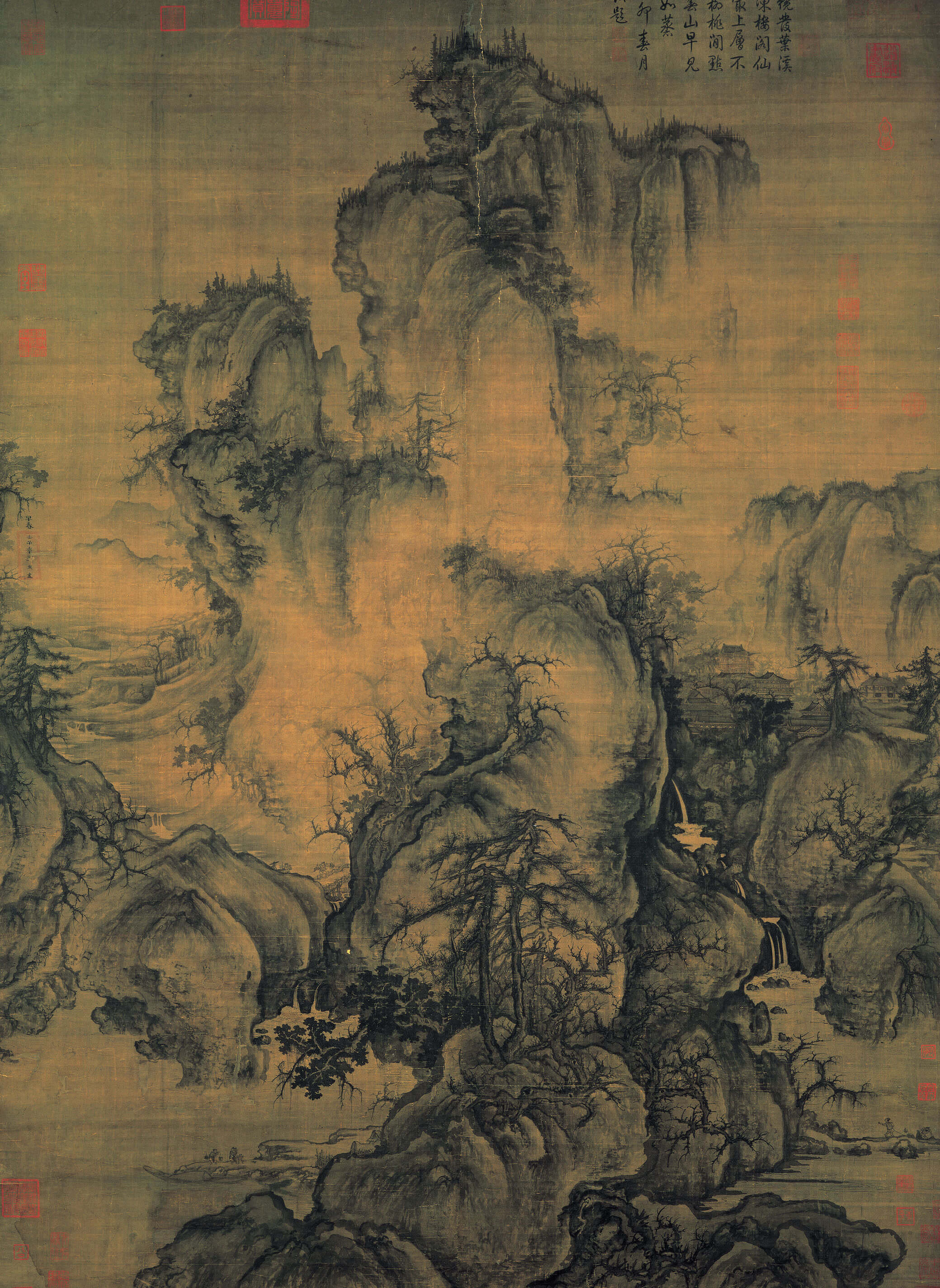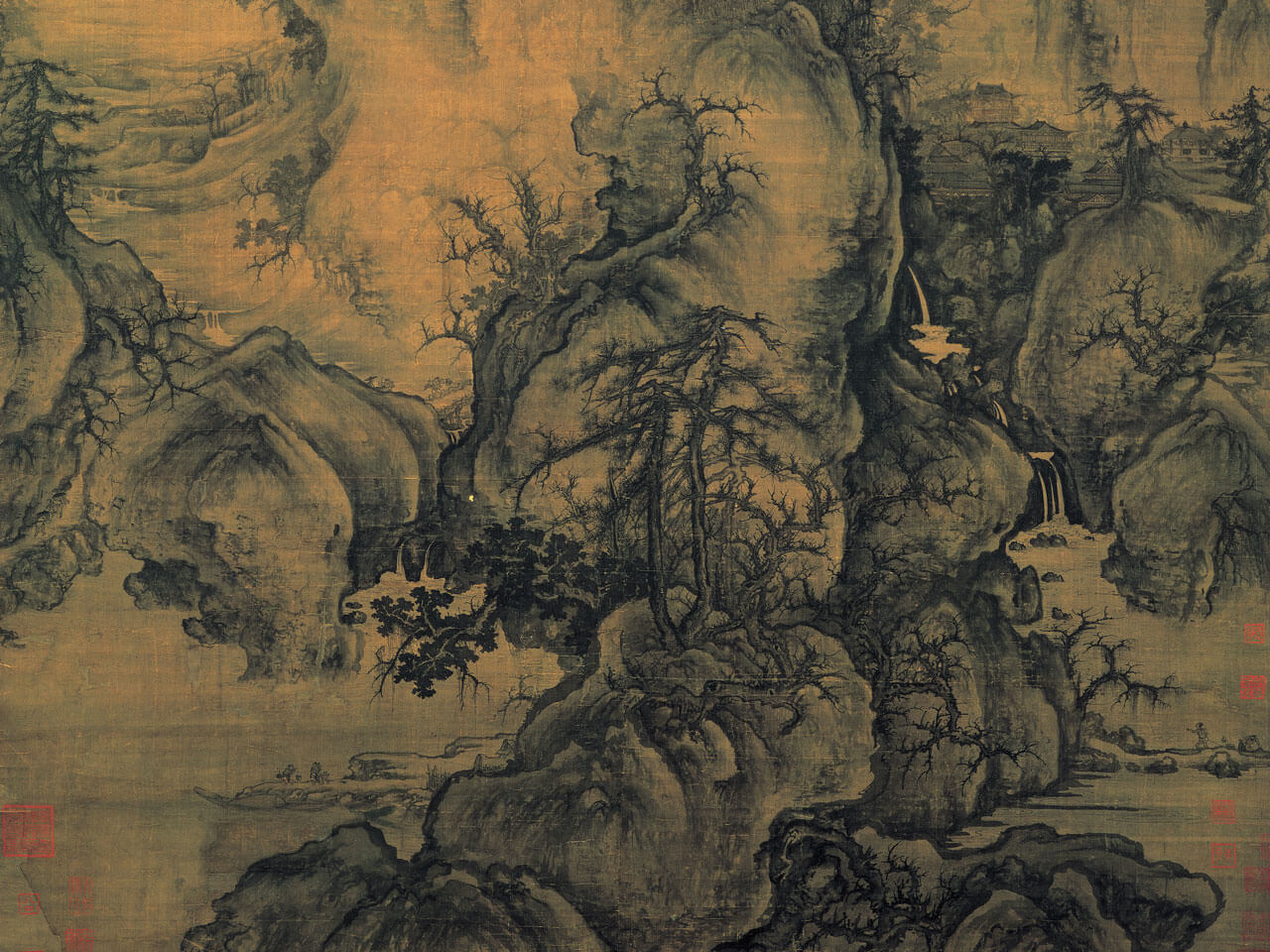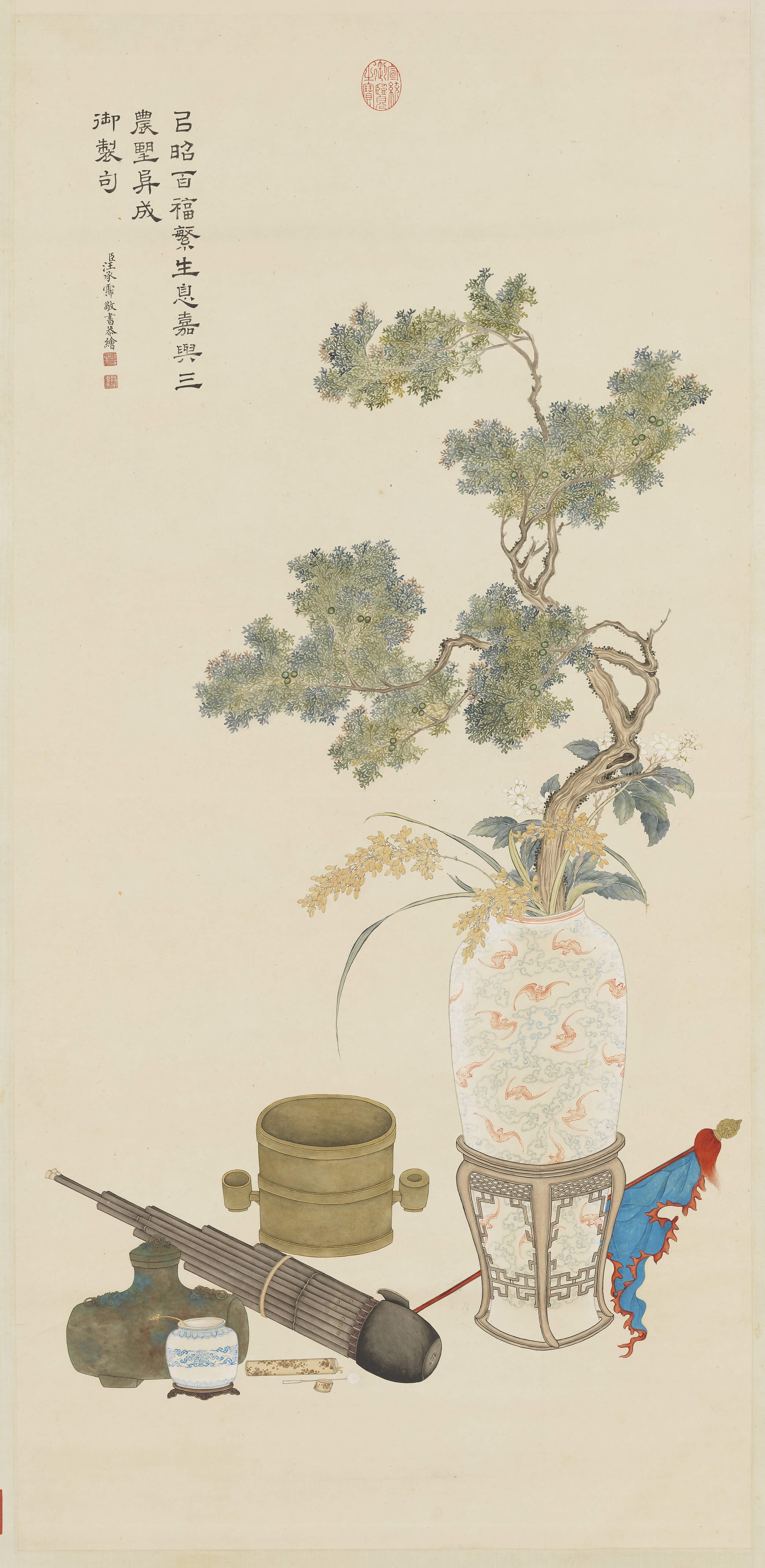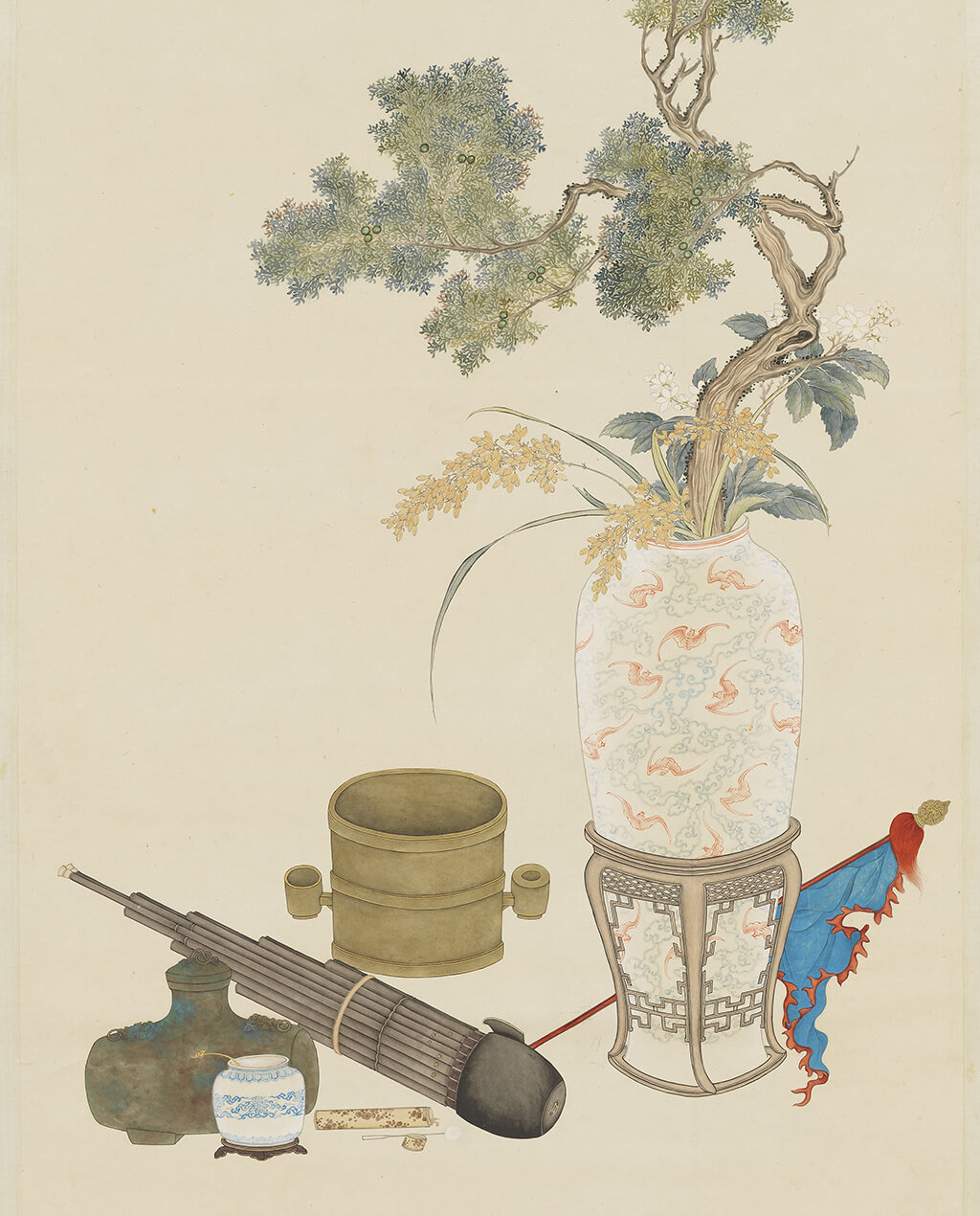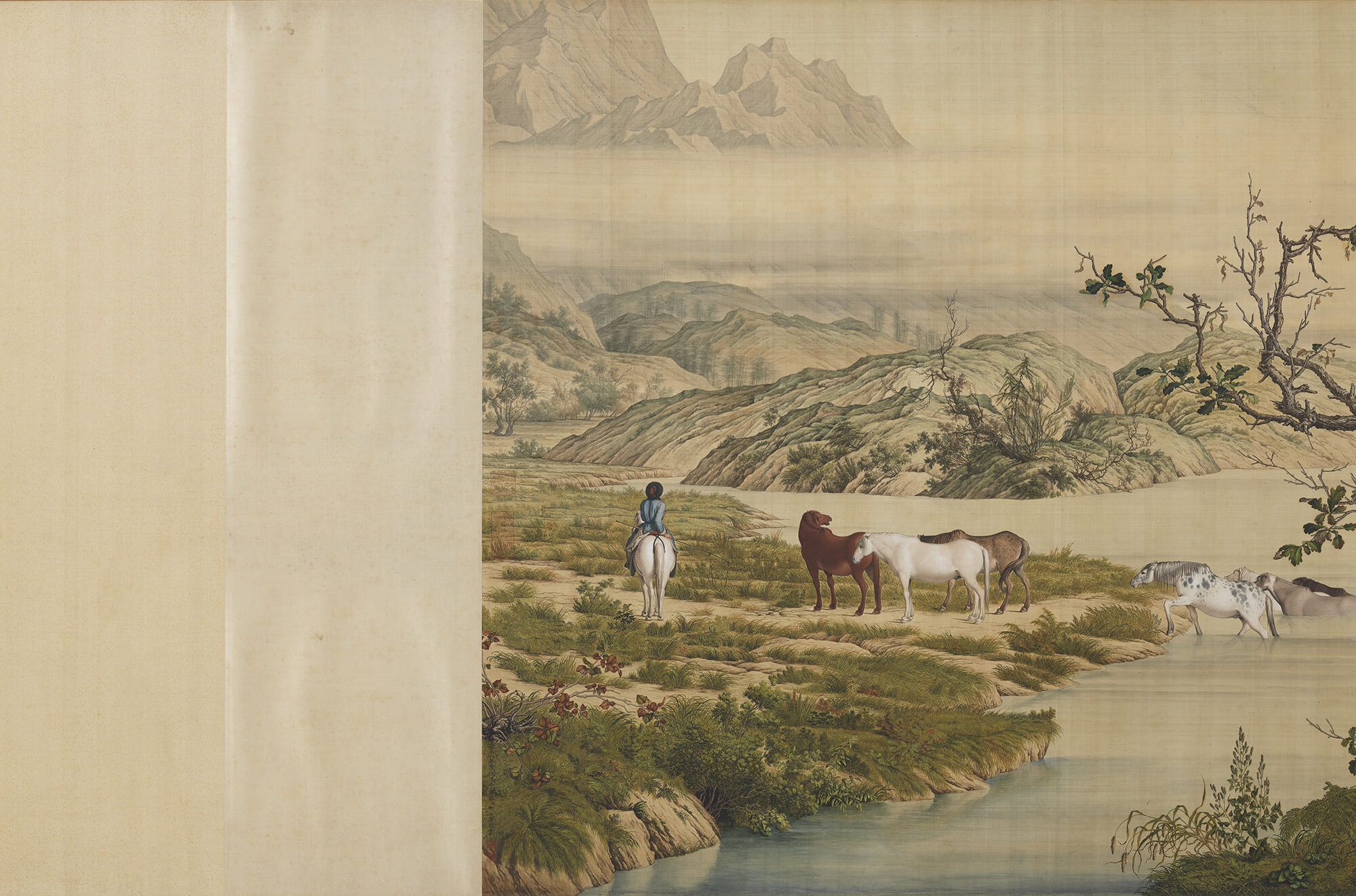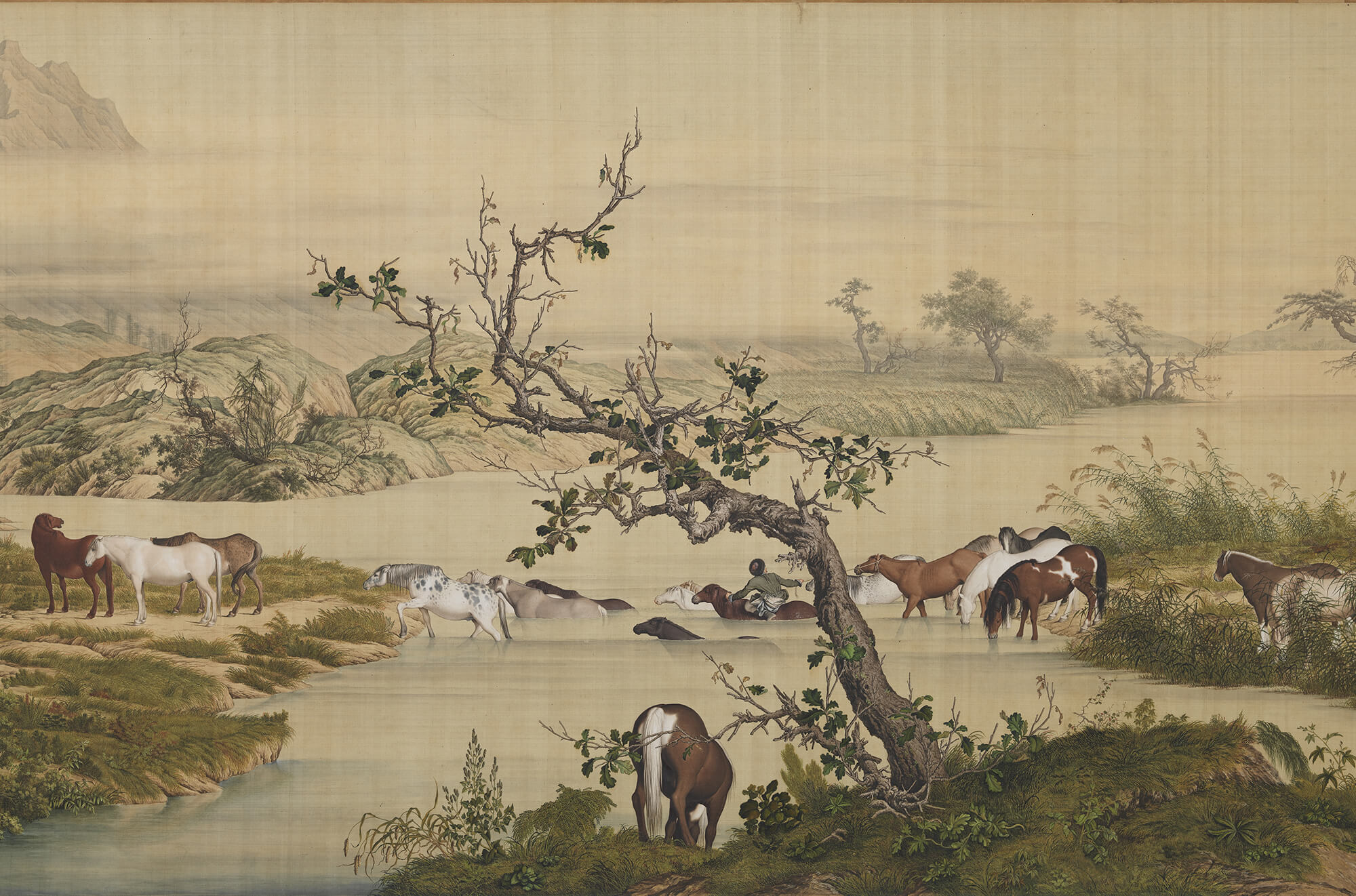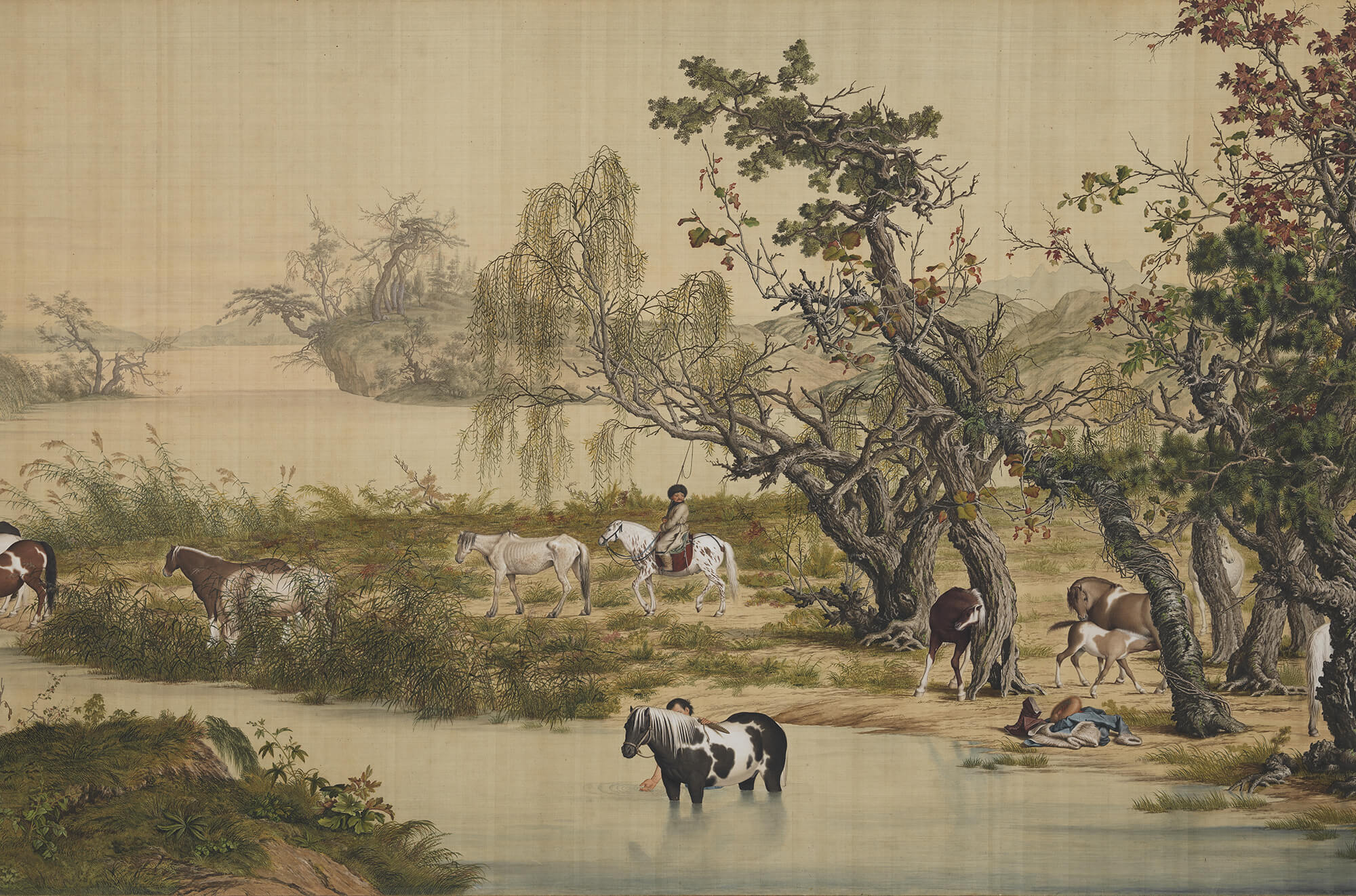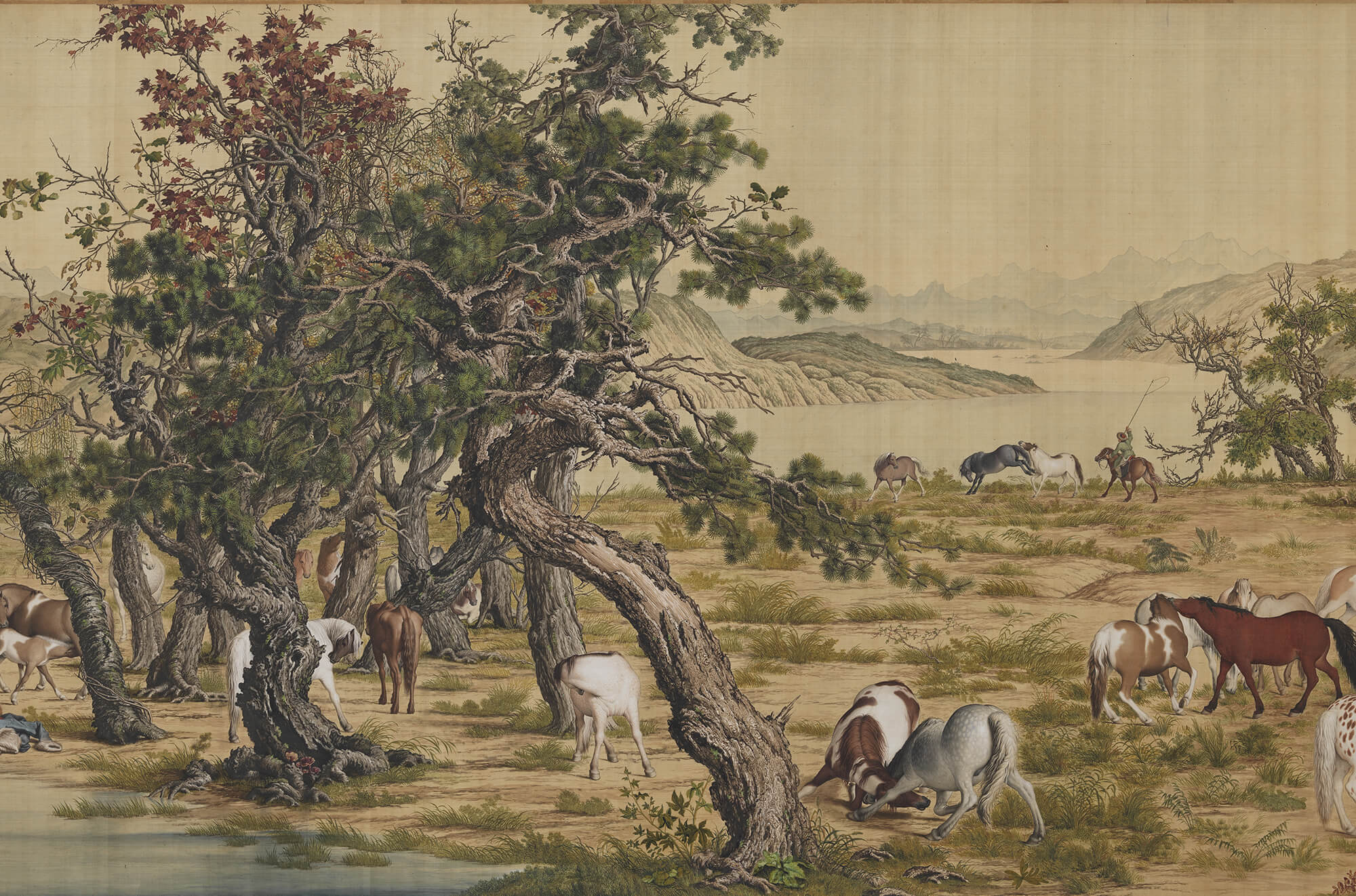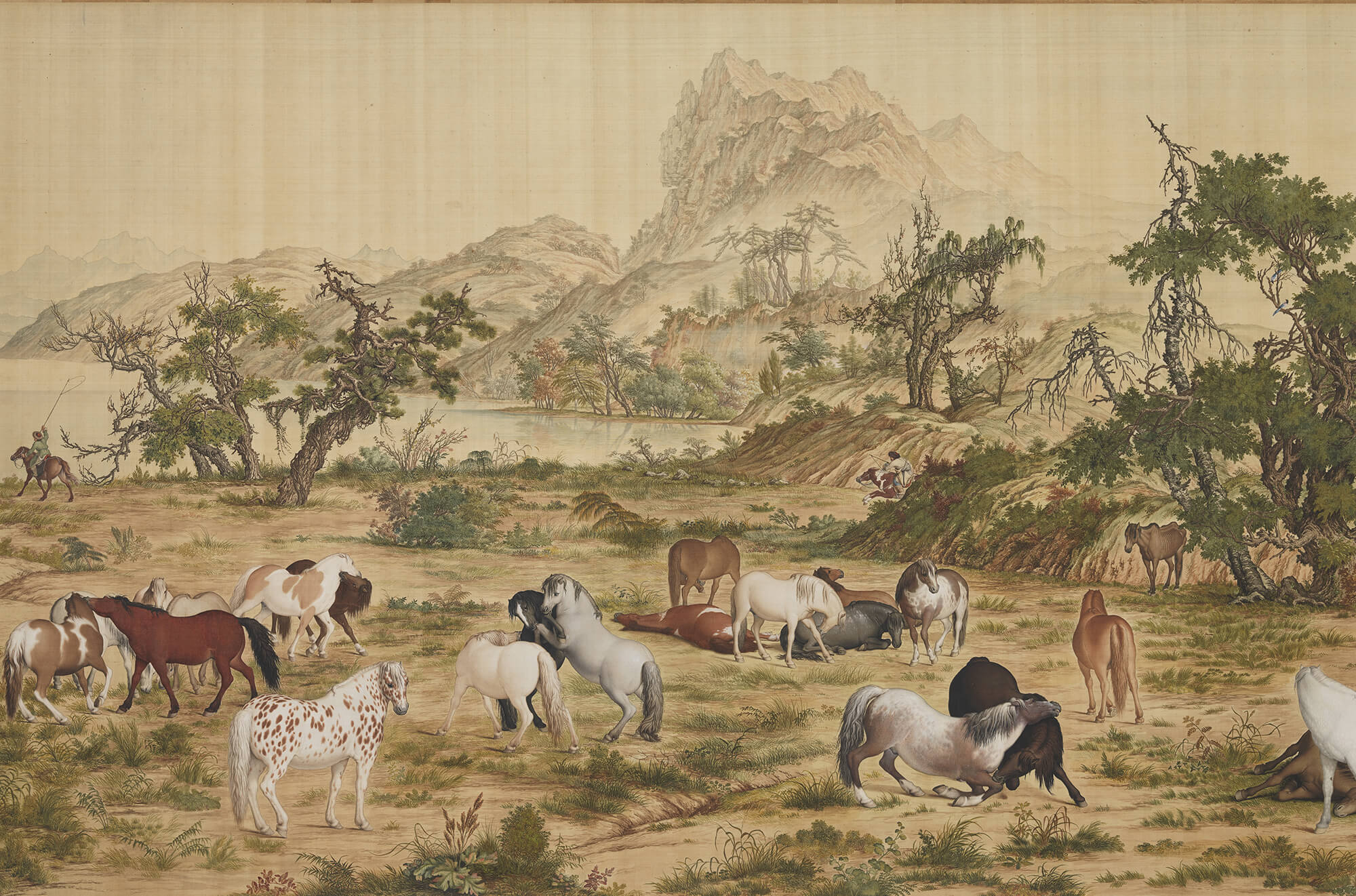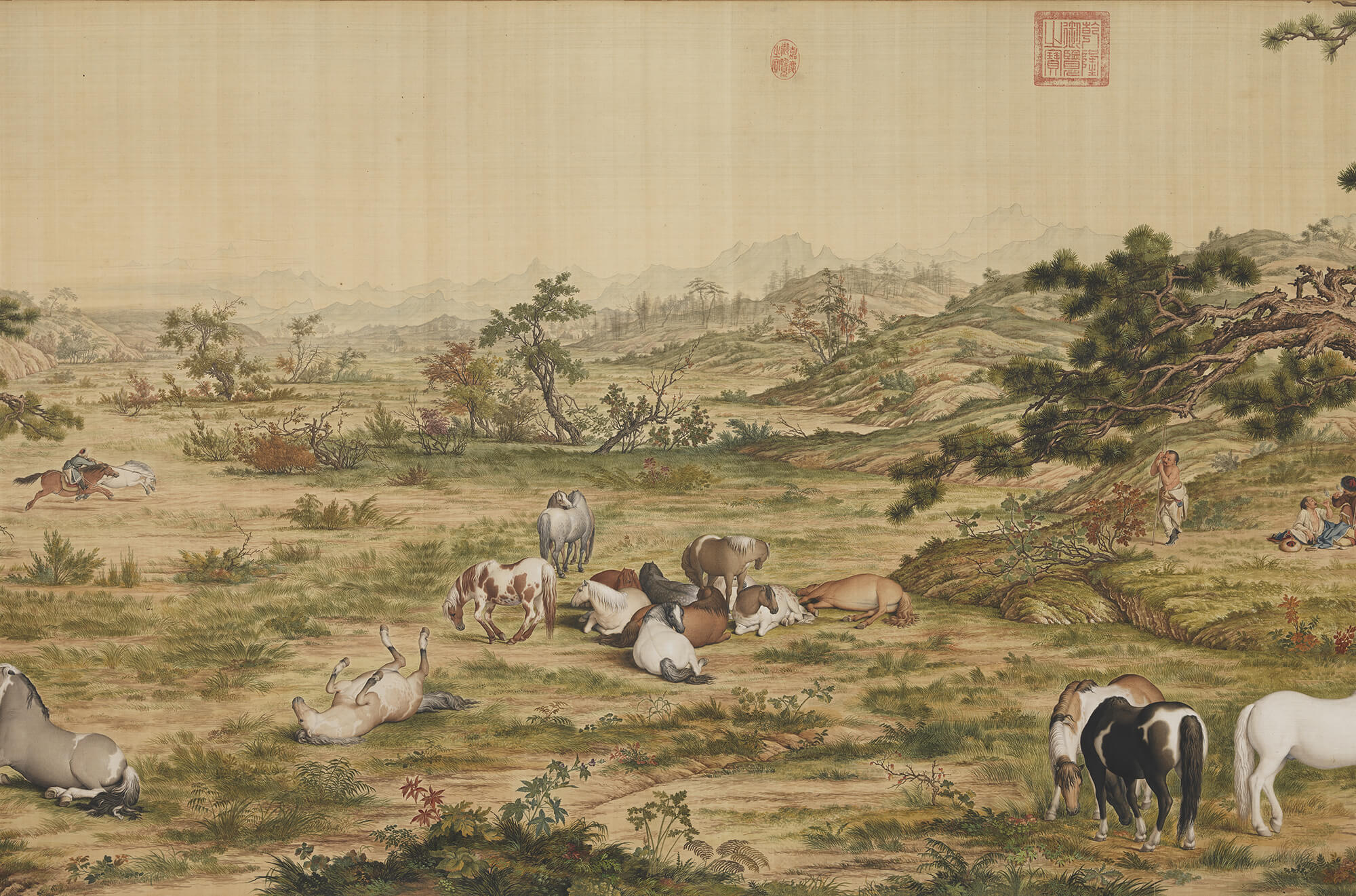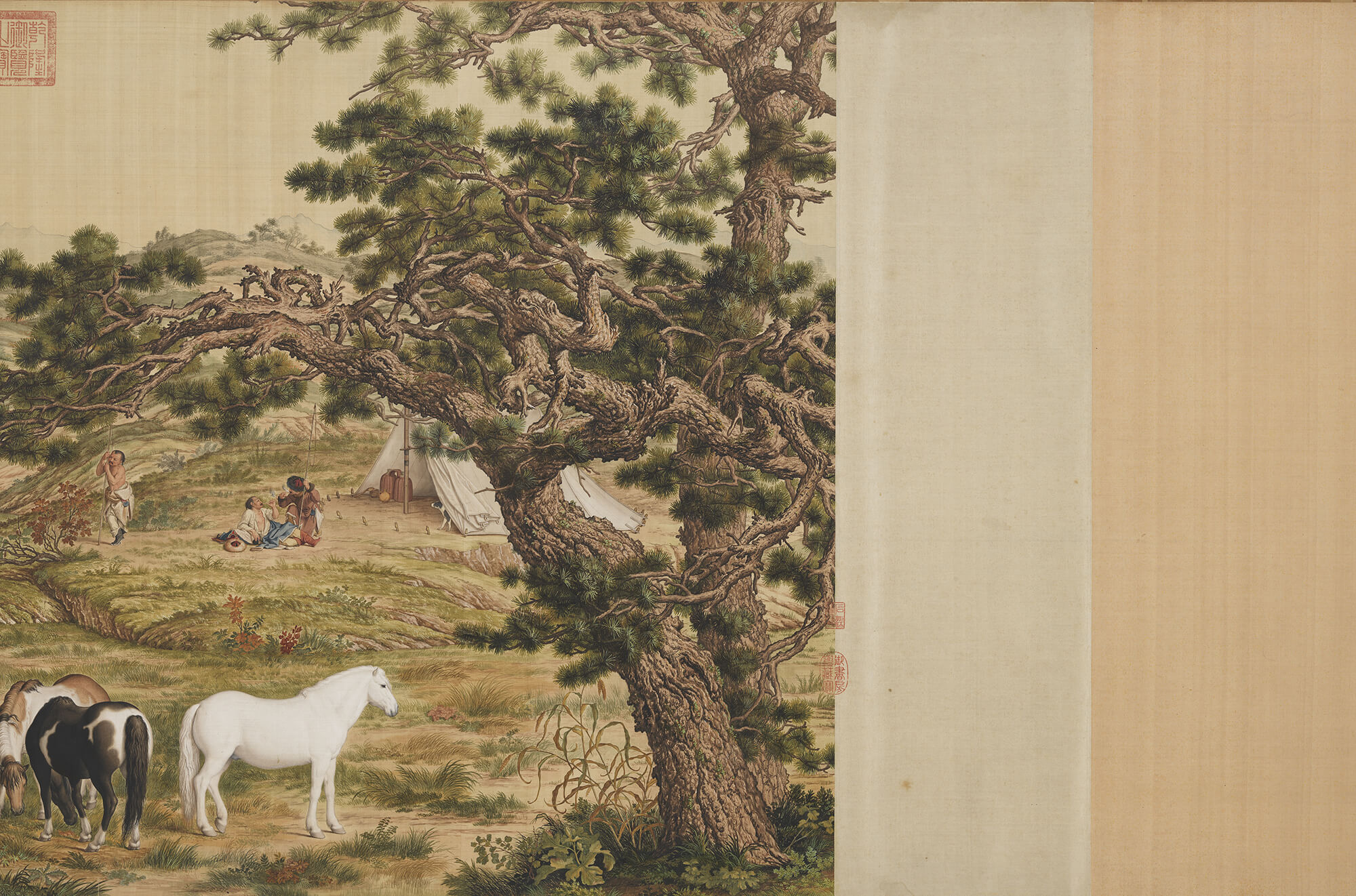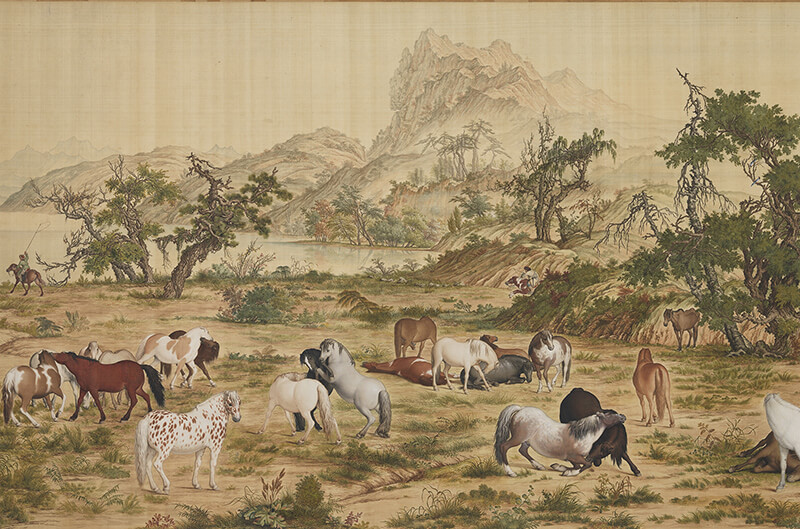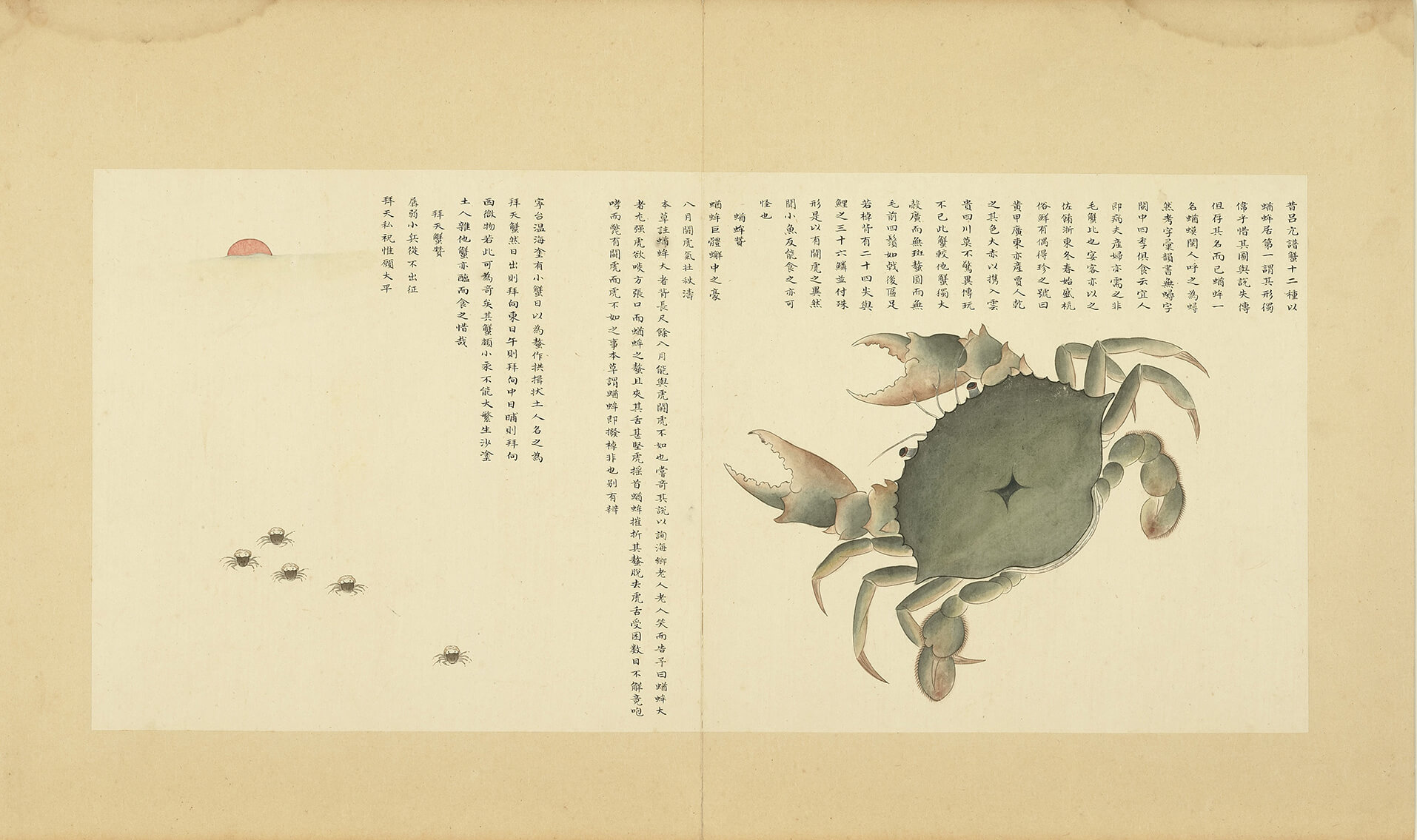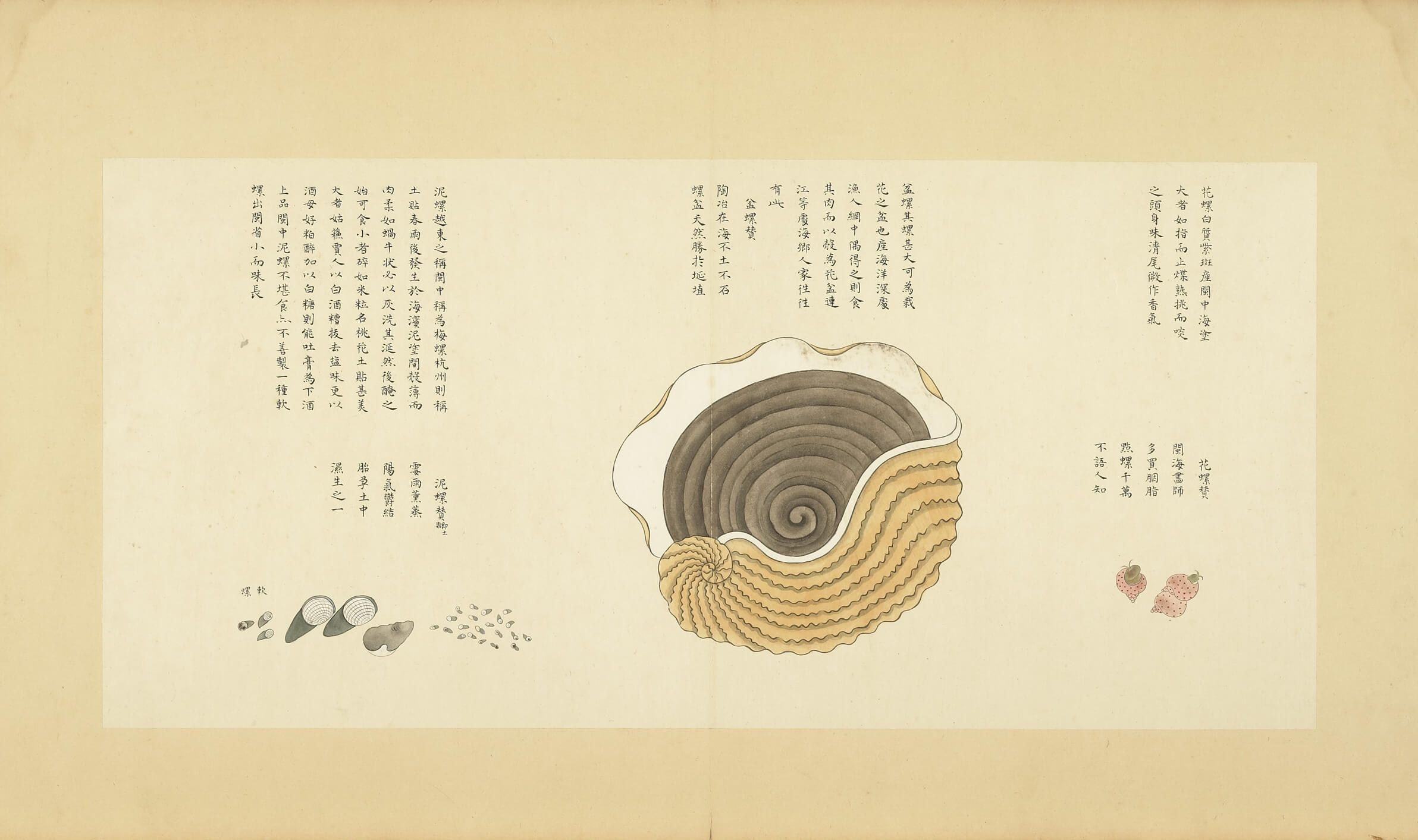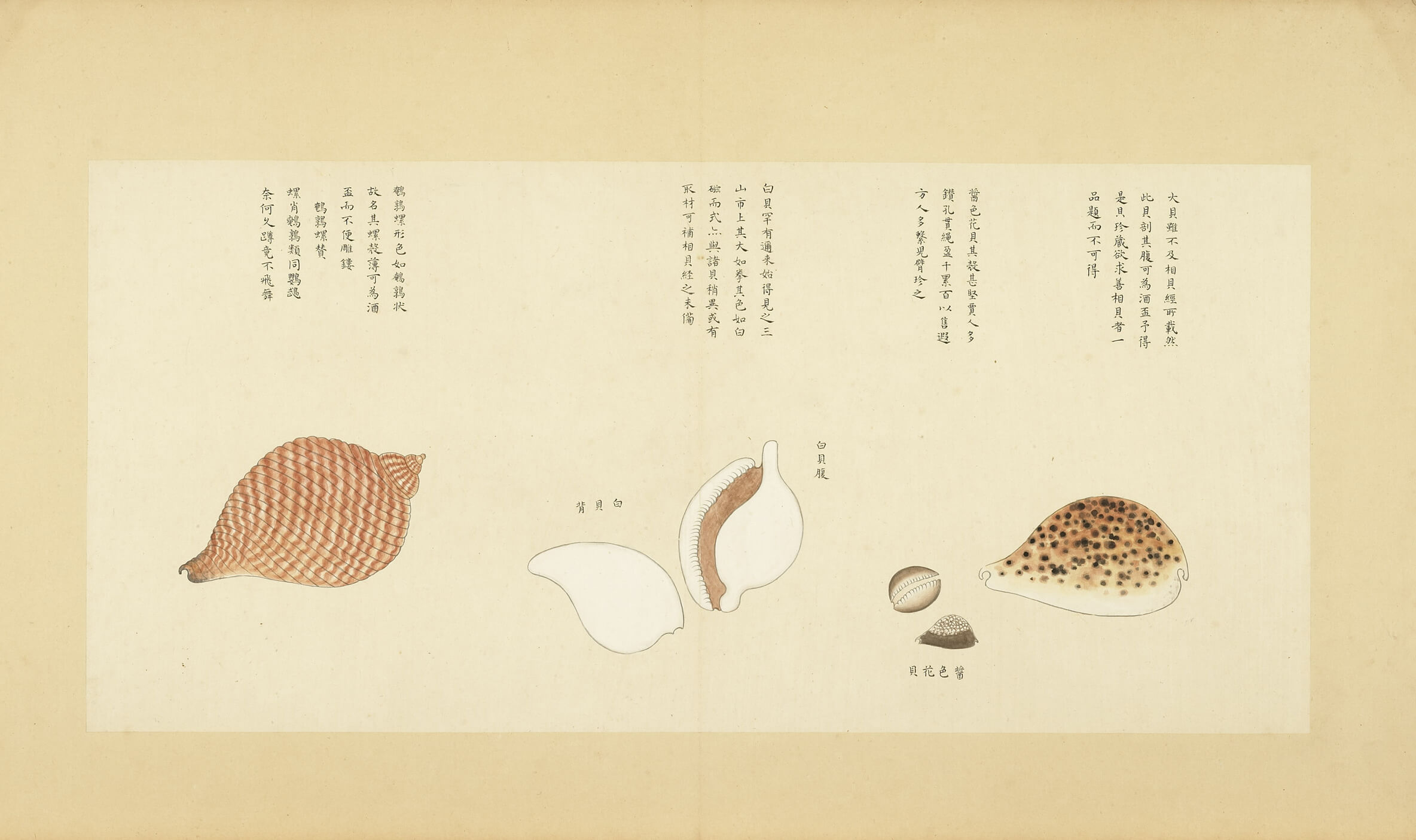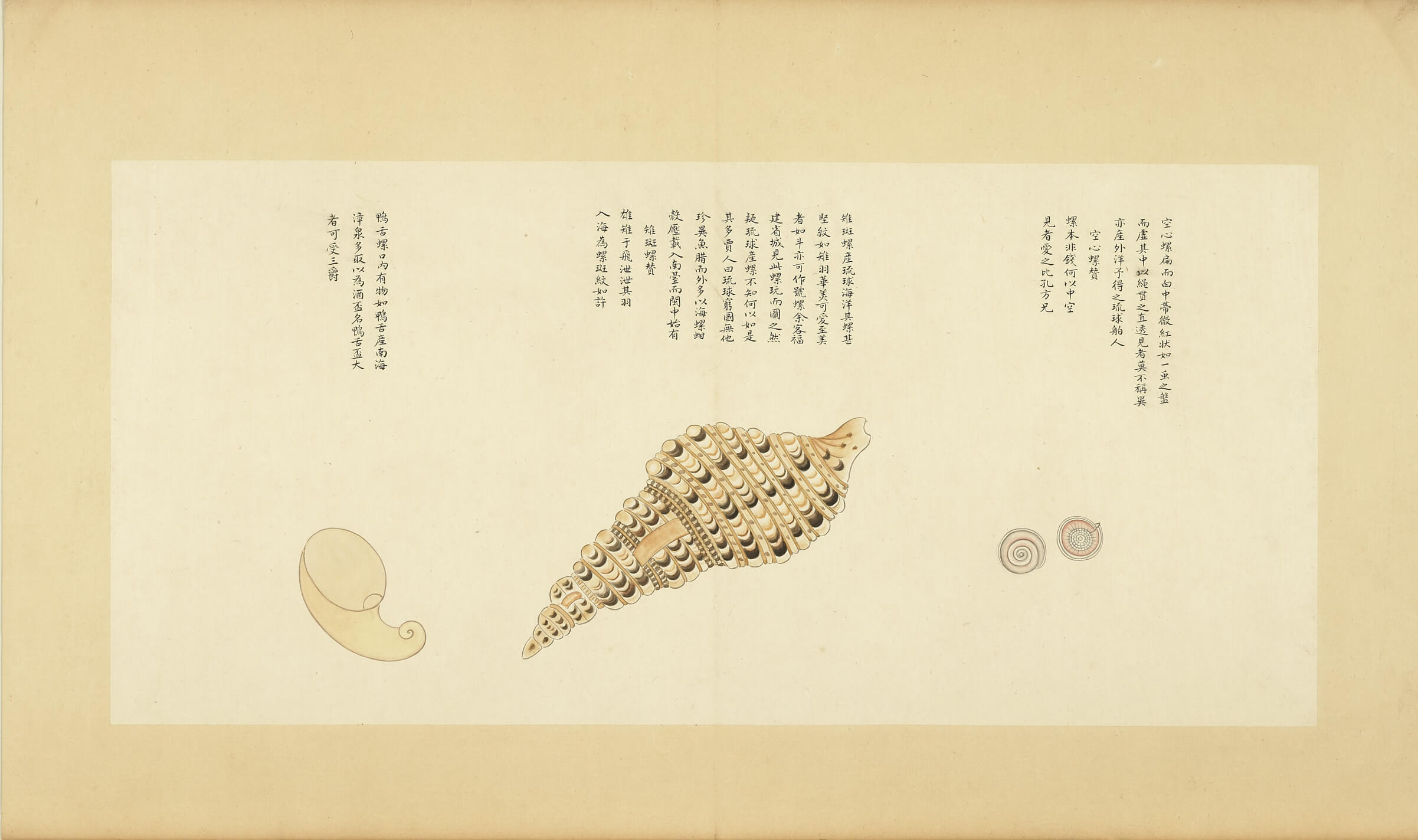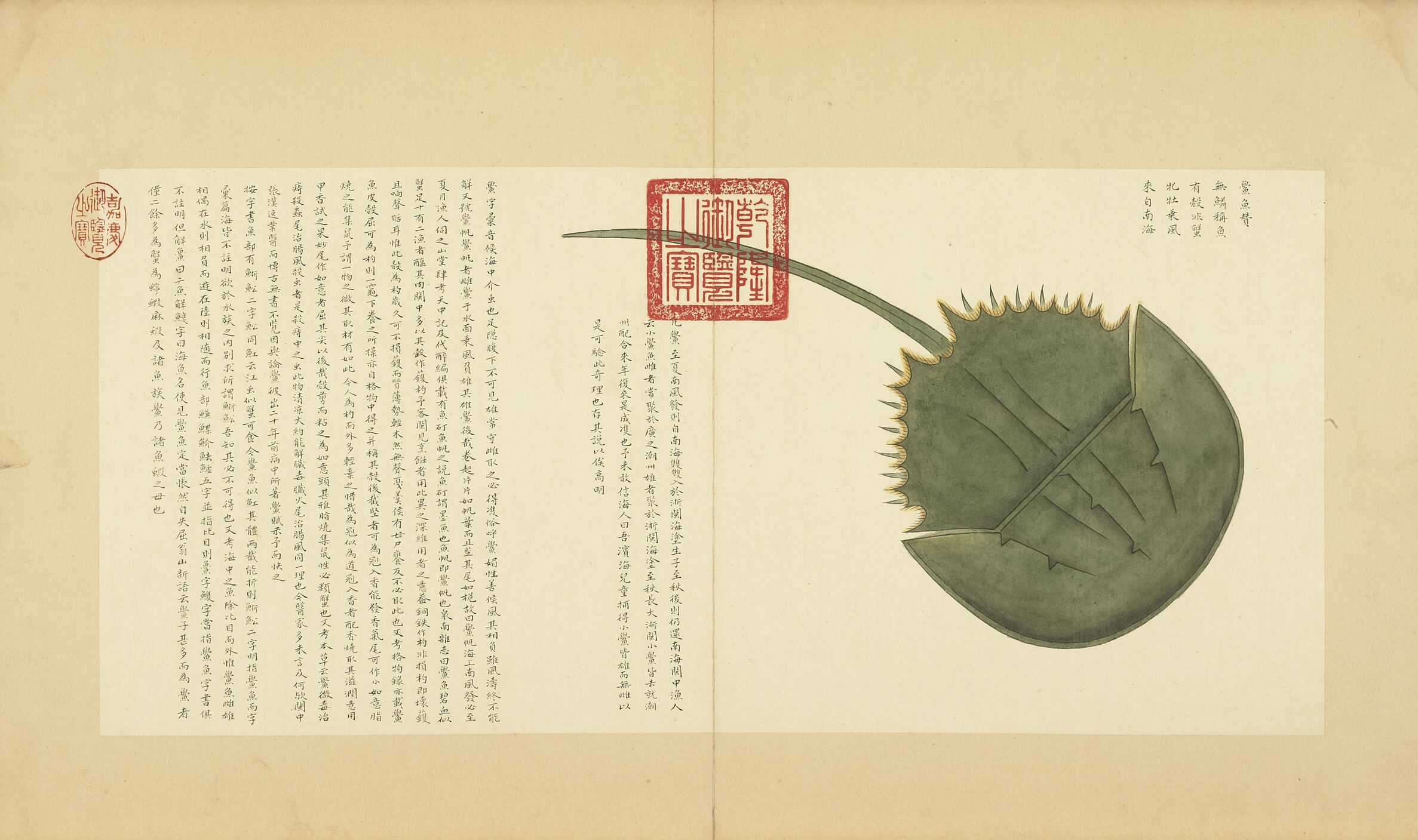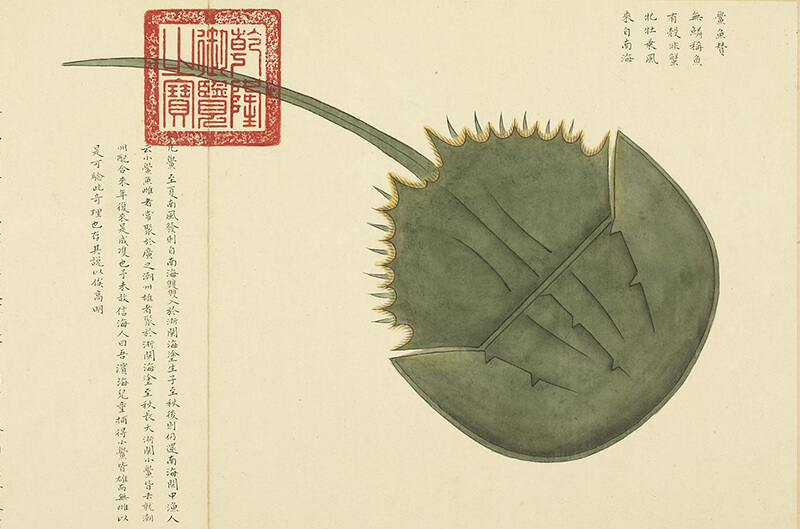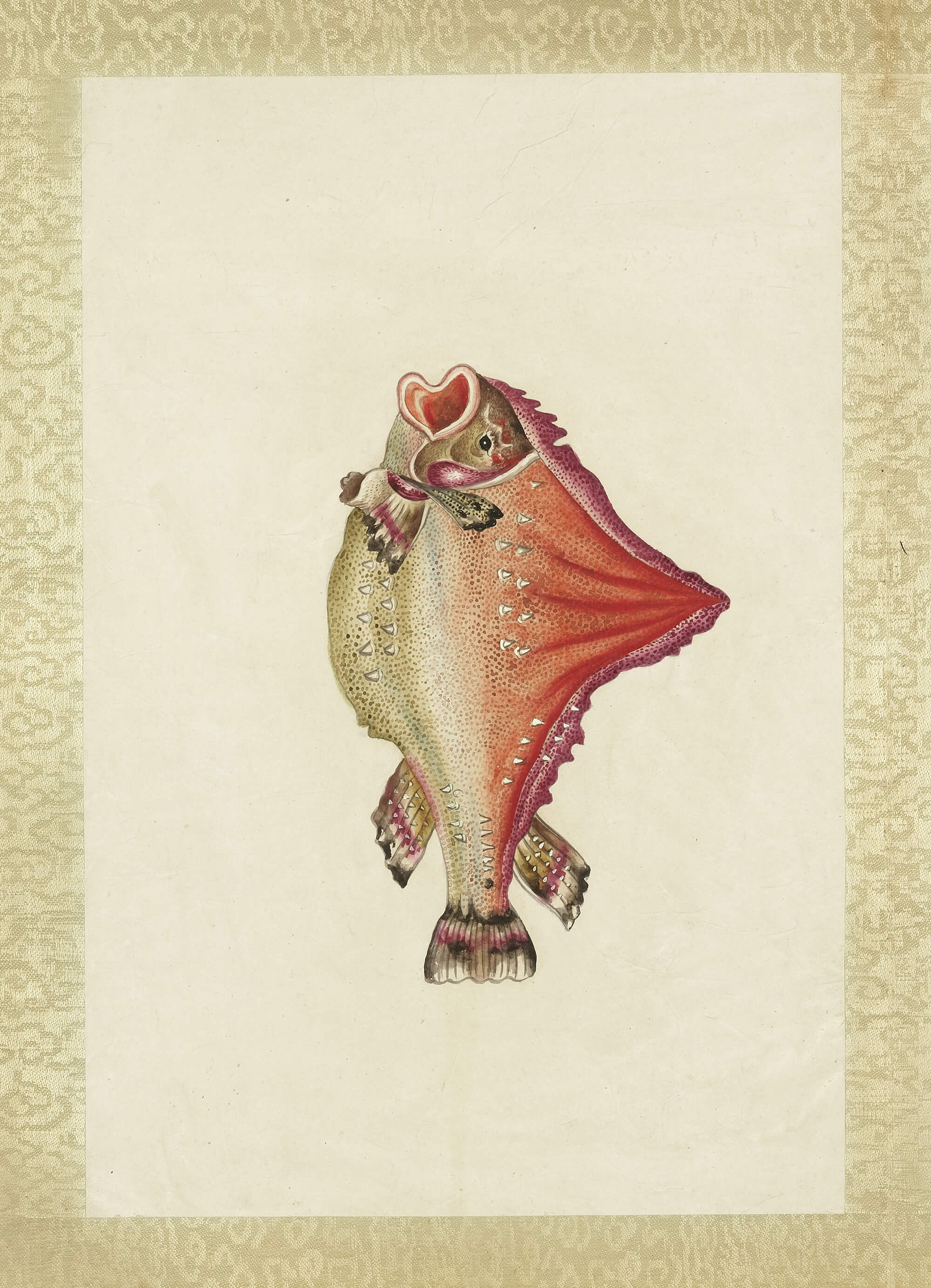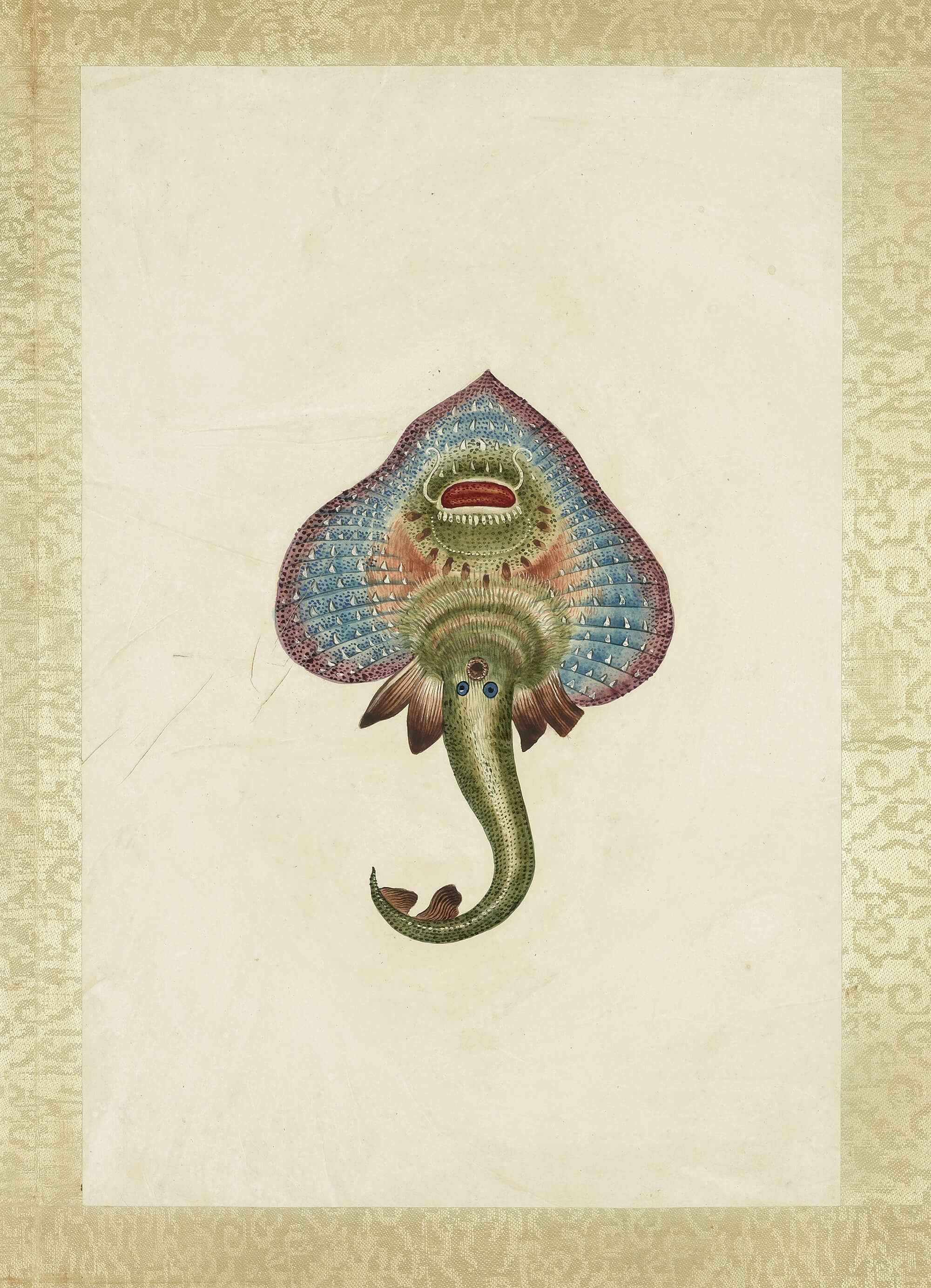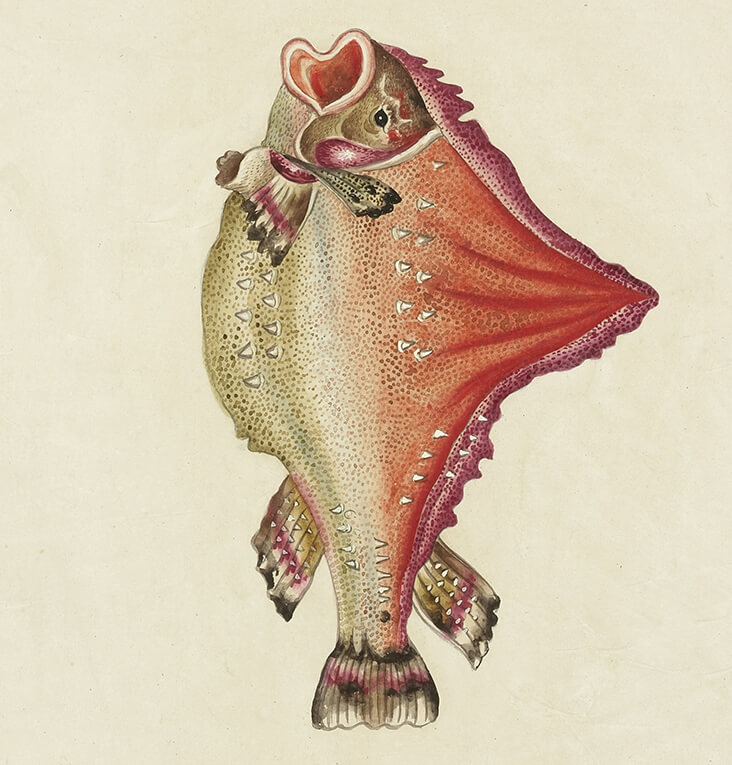About Exhibits
Composition
When creating a painting, the artist arranges scenery in a distinct, meaningful way that harmoniously distributes all elements and supports the relationship between subject and background. This process is called composition. In the preface to Classification of Painters, written during the period of the Six Dynasties, the Chinese art critic and author Xie He named "division and planning," or composition, as one of the main principles of painting. Apt composition conveys the themes of a painting and the creative thought of the artist in a manner that brings a visual aesthetic to the canvas.
-
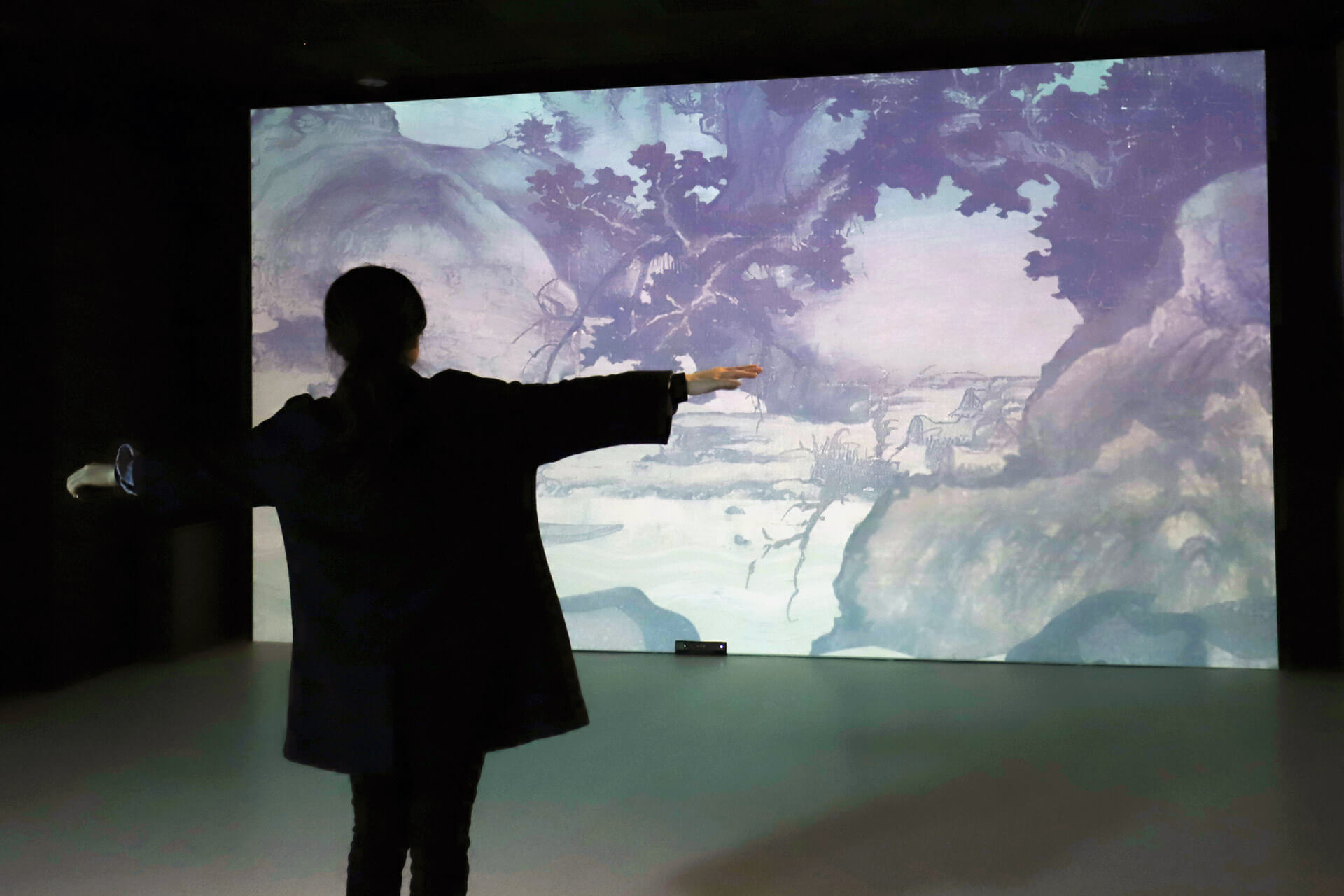
-
Into the Painting
"Into the Painting" is a multisensory interactive experience based on Early Spring, a masterpiece of painting housed in the National Palace Museum. Through multisensory interactive technology, audiences are invited to walk into the vast landscape and view its characters, magnificent mountains, gurgling streams and tranquil pavilions by following the meandering path laid out by the painter’s brush. Viewers overlook the majestic scenery and revel in the splendor of the Chinese landscape painting like a bird hovering in the sky.
-
Artifact Inspiration:
Early Spring
- Guo Xi (active in 11th century), Song dynasty
- Hanging scroll, 158.3 x 108.1cm
Created in 1072, Early Spring is not only the finest representative work of the master Guo Xi, but also one of the most important surviving milestones in the history of Chinese landscape painting. The composition is arranged in a symmetrical manner, but the sense of order still reveals variations full of rhythm and movement. In addition, the effect of light and dark achieved through the use of graded washes of ink also adds considerably to the illusory effect of space in this landscape. The inclusion of activities such as boating, gathering firewood, and traveling further transforms the painting into a mystical realm full of life, wherein the viewer can travel and exist.
Auspicious Meanings
When an artist paints an object, beyond just showing form and style, sometimes he or she goes a step further by adding deeper cultural connotations. Oftentimes, the artist depicts the beauty of people or yearning for an ideal life by integrating objects with a name that sounds the same as or similar to the target theme. For example, bats (bianfu) and deer (lu) represent happiness (fu) and fortune (lu). The characters for "cat" (mao) and "butterfly" (hudie) sound similar to words that refer to a person of a very advanced age, and are therefore used to wish someone a long life. These extended meanings reflect the many layers of popular social customs and spiritual culture in human society.
-
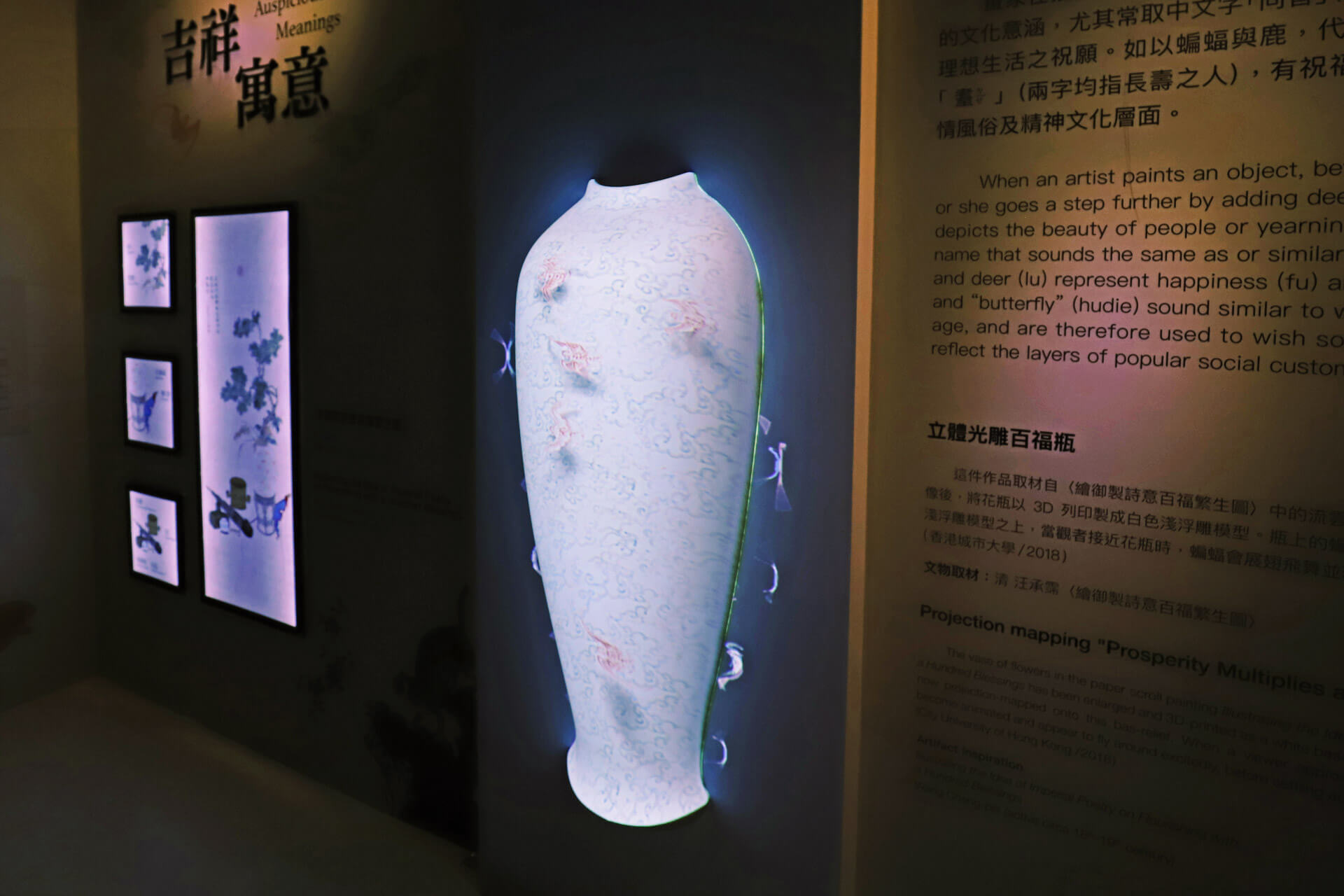
-
Projection mapping "Prosperity Multiplies a Hundredfold"
- City University of Hong Kong
- 2018
The vase of flowers in the paper scroll painting Illustrating the Idea of Imperial Poetry on Flourishing with a Hundred Blessings has been enlarged and 3D-printed as a white bas-relief. The bats painted on that vase are now projection-mapped onto this bas-relief. When a viewer approaches the vase, these projected bats become animated and appear to fly around excitedly, before settling again into their original painted positions.
-
Artifact Inspiration:
Illustrating the Idea of Imperial Poetry on Flourishing with a Hundred Blessings
- Wang Cheng-pei (active circa 18th – 19th century), Qing dynasty
- Hanging scroll, 339 x 89cm
Wang Cheng-pei excelled at poetry and was gifted at calligraphy and painting flowers. In Mandarin, "ears of rice inserted into a vase" sounds similar to the phrase "may you have peace year after year." "Cypress" sounds the same as the word for "hundred." It is combined with bats, a pennant, and a reed pipe to represent a phrase that means "great fortune and flourishment," thus serving as a symbol of happiness and good fortune. The red bats adorning the vase combine with the pennant to mean "a flood of good fortune fills the heavens." The word for "reed pipe," which sounds the same as a character witch means "to rise to the rank of," symbolizes conferring a title or an official position. In ancient times, people used a fine standard measure to weigh grain. It symbolizes a harvest. The bronze vessel and water container would have held water. They symbolize how water is a key ingredient for stable farm yields.
Color
When painting, artists choose colors based on their desired theme, preferences, the style of the time period, their cultural background, as well as the particular meaning they hope to convey. Traditional Chinese paintings can be separated into colorful works of art and ink wash paintings that rely on tonality and shading instead of color. Colored paintings used dyes or pigments extracted from plants or minerals to provide the artist powerful tools for adjusting depth and hue. Vivid greens were contrasted with light ocher (which used ink as a base, mixed with ocher, azurite, or malachite). With ink wash painting, however, the artist must carefully adjust the consistency and shade of the ink along with the types of brushstrokes and layers used in order to create lively objects.
-
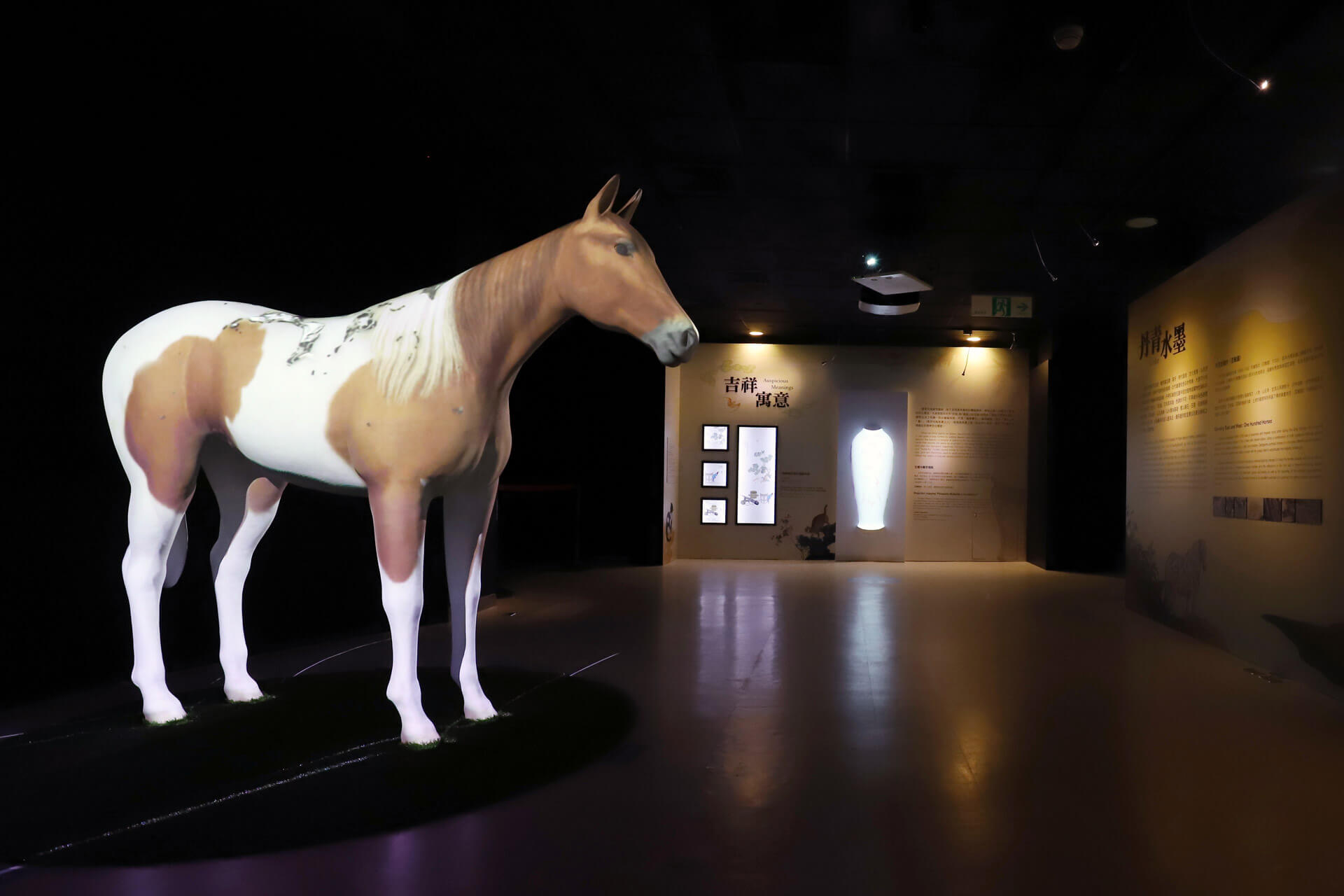
-
Morphosis of Castiglione’s Hundred Horses
- City University of Hong Kong
- 2016
Considered to be among the top ten masterpieces of Chinese painting, Giuseppe Castiglione’s One Hundred Horses silk handscroll depicts about a hundred horses with a variety of coat colors and distinctive markings. This installation provides a digital animation of the painting’s equine coat textures, and projection maps them onto the surface of a white life-size horse sculpture, thereby creating the visual illusion of a morphosis of all the horses in Castiglione’s painting.
-
Artifact Inspiration:
One Hundred Horses
- Giuseppe Castiglione, Qing dynasty
- Handscroll, 94.5x776.2cm
This is an early painting by Giuseppe Castiglione, one of the most famous Europeans in the service of the Qing dynasty court. This hand scroll, more than seven meters long, depicts a scene of horses taken out to pasture in autumn. The one hundred steeds are portrayed in a variety of poses and activities as they leisurely make their way around the pastures and trees. Castiglione, using refined gradations of light and shadow, has rendered an exceptionally realistic scene. Although the painting compositionally represents a continuation of traditional arrangements of horse herding in Chinese art, the placement and depiction of the trees and landscape elements clearly reveal the deep atmospheric effects often found in Western art. Even the sizes of the horses vary with distance and are shown in relative proportion. Likewise, the painting method used for the distant mountain rocks is distinct from that seen in traditional Chinese brushwork, with layered pigments also visible among the trees.
Proportion
The dimensions (length, area, volume) of various objects in a group should be in proportion to one another. In this painting, the viewer determines the correct proportion by examining the people in the composition and the space that a single piece of scenery commands. A painter who blends different proportions together can create either harmony or conflict. A balanced proportion leads to both a positive visual and aesthetic experience.
-
Artifact Inspiration:
One Hundred Horses
- Giuseppe Castiglione, Qing dynasty
- Handscroll, 94.5x776.2cm
This is an early painting by Giuseppe Castiglione, one of the most famous Europeans in the service of the Qing dynasty court. This hand scroll, more than seven meters long, depicts a scene of horses taken out to pasture in autumn. The one hundred steeds are portrayed in a variety of poses and activities as they leisurely make their way around the pastures and trees. Castiglione, using refined gradations of light and shadow, has rendered an exceptionally realistic scene. Although the painting compositionally represents a continuation of traditional arrangements of horse herding in Chinese art, the placement and depiction of the trees and landscape elements clearly reveal the deep atmospheric effects often found in Western art. Even the sizes of the horses vary with distance and are shown in relative proportion. Likewise, the painting method used for the distant mountain rocks is distinct from that seen in traditional Chinese brushwork, with layered pigments also visible among the trees.
Manifold Themes
Common themes in ancient paintings include people, mountains & streams, and birds & flowers (a wider interpretation of "birds & flowers" would include livestock and other wild animals, including insects as well as fish and other aquatic animals). As time advances, these themes are passed down and undergo changes, resulting in a wide range of artistic appearances.
in Fujian, where he called himself "a guest of the Minnan people." He illustrated 30 types of crabs in the Manual of Crabs (1687). He used this, and other experiences seen and heard traveling the land, to create the Rich and Varied Products of the Sea.
The name for Rich and Varied Products of the Sea comes from the Discussion on the Tribute of Yu, in which the articles of tribute included salt, fine cloth, and various productions of the sea. The text describes how the land Qingzho (Shandong) is bountiful with miscellaneous sea creatures. Rich and Varied Products of the Sea likewise gives insight into the variety of creatures ancient people found in the sea and is a triumph of the artist’s time spent gathering information and conducting research.
-
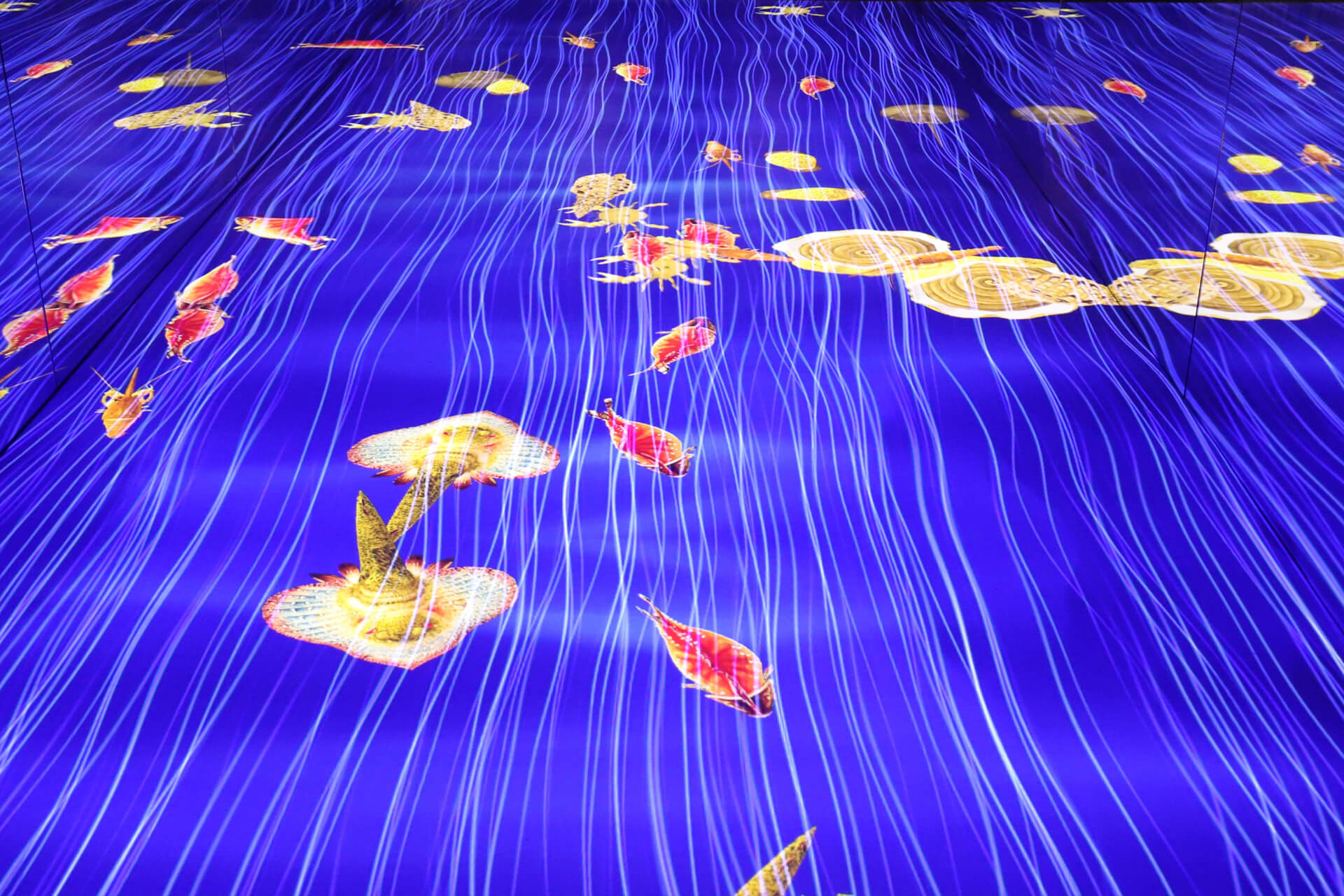
-
Marvels within the Sea Immersive Interactive Tunnel
This immersive underwater tunnel features fascinating sea creatures from Rich and Varied Products of the Sea and Sea Oddities, and reveals how people observed and imagined marine life in the Qing dynasty. Upon entering the interactive tunnel, visitors will be able to explore the depths of the ocean and wander through this boundless underwater world.
-
Artifact Inspiration:
Rich and Varied Products of the Sea
- Nie Huang (active during 1662-1722), Qing dynasty
- Album leaf, 30.4 x 68 cm
Rich and Varied Products of the Sea is in four albums, the first three in the Beijing Palace Museum and the fourth at the National Palace Museum. This album depicts such marine life as horseshoe crabs, snails, crabs and shrimp. With no seal or signature of the artist, each painting has a title and explanation of praise in regular script.
The preface to the first album states that in the summer of 1698, Nie Huang traveled to Fujian and visited coastal areas. Nie, a native of Qiantang (modern Hangzhou, Zhejiang), traveled all over the land for nearly 20 years, in 1687 illustrating 30 crabs in his "Manual of Crabs." He later gathered illustrations of the many sea creatures he had seen and heard of to paint them in Rich and Varied Products of the Sea.
-
Artifact Inspiration:
Sea Oddities
- Qing dynasty (1644-1911)
- Album leaf, 33 x 22 cm
The artist(s) of this work is unknown. There are no inscriptions or other textual written on it. Only a record seal of the reign of the Hsuan-tung Emperor (1908-1911) appears. Composed altogether of 16 leaves, a rainbow of colors was used to paint various kinds of unusual and exotic sea life. Some of them appear to be based on actual species found in nature, while others look as if they are imaginative constructions that require further research. The wooden cover of the album is engraved with the characters for the "wu-chen" cyclical year. Recurring every 60 years, the possible years include 1748,1808, and 1868. Further research, however, is required to date this work more precisely.
Brush and Ink Artistic Conception
In a process known as artistic conception, the artist conceives the creative state of a work of art. For example, in landscape paintings, beyond simply portraying nature as it appears in real life, artists integrate their own thoughts and emotions into the scene. They may use mountains, streams, or other natural objects as vessels for conveying their thinking. They blend in different scenes and create a distinct, lively style. For example, Guo Xi’s thoughts on natural paintings were described in Lofty Ambitions in Forests and Streams, which was compiled by his son, Guo Si. Among these thoughts is the idea that landscapes include "those through which you may travel, those in which you may gaze from a distance, those through which you may wander, and those in which you may live." This way of thinking closely ties people to landscape paintings. Artistic conception shows viewers the atmosphere of different settings and inspires different states of mind. These could include joy and sorrow, seriousness and frivolity, or other moods that compose a diverse range of aesthetic states.
"Traveling Through Brush and Ink" Frame-by-Frame Animation
This short film uses four paintings in the museum’s collection as inspiration: Emperor Minghuang’s Journey to Shu, Travelers Among Mountains and Streams, Ancient Temple in Mountain Pass, and Autumn Colors on the Que and Hua Mountains. The main character, meanwhile, transforms into various animals and plants while wandering across the Tang era’s colorful mountain streams, the Northern Song era’s lofty peaks, a diagonal natural scene from the Southern Song era, and bluish-green landscapes in ancient paintings were places suitable for travel, gazing, wandering, and living. At the same time, it shows how the style of landscape paintings developed and evolved over time.
Animation Directors: Jhao An-ling, Chen Pu
The Epitome of Aesthetics
This series of videos presents the mystery, beauty and cultural meaning of each artifact by integrating various aesthetic principles (color, proportion, texture, structure, construction, composition) and key artifact characteristics (mounting, themes, artistic conception, narrative, technique, style).
Taking examples from the National Palace Museum’s collection, experts of aesthetic education were specially invited to speak in-depth about these twelve aesthetic principles.
Aesthetic Education Consultants: Jo Ciung-Hua Chen, Lian-Dong Chuang, Min-Fang Chiu
